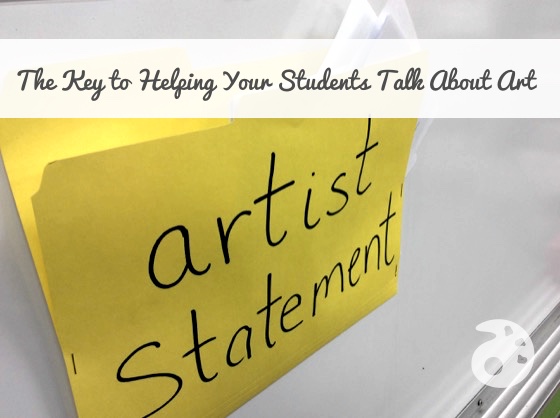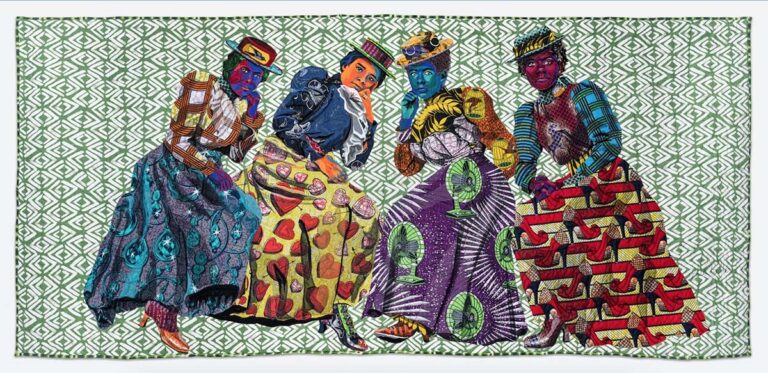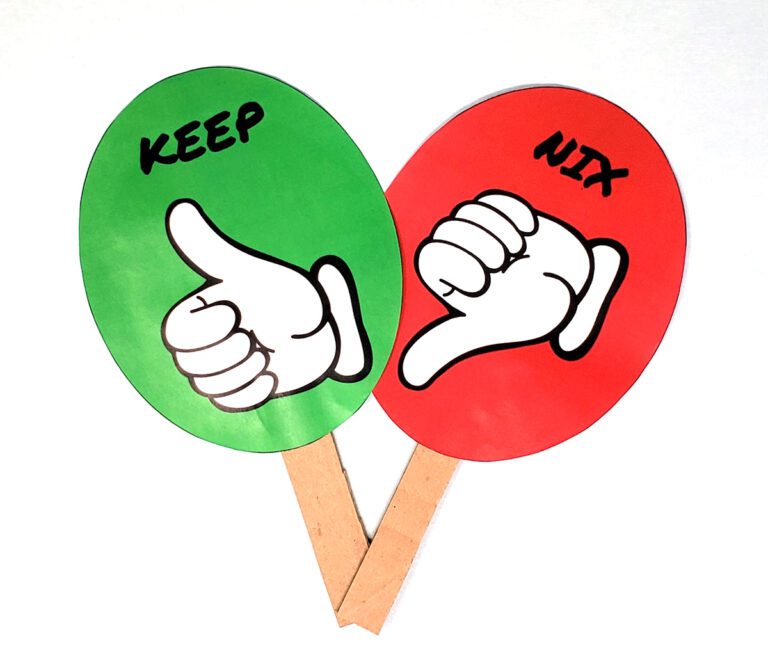
How do your students respond to and talk about art?
A while back, I was responsible for grading my students on a question quite similar to the one above. When quarterly grades would roll around, I would inevitably dread grading that question and doubt my decisions afterwards. Sure, I could use a tally system to count my students’ insightful thoughts and meaningful conversations, but that seemed like an overwhelming process. Plus, I worried I was unfairly grading students who felt uncomfortable talking in front of their peers.
I decided I needed a more concrete way to establish whether or not my students could indeed talk about their creations and other artwork. This year, I set up and started piloting a new way to track these very things. My students are now responsible for and actively writing their own artist statements after each project.
The real key to getting your students to a place where they are able to talk about art is to have them practice. A lot.
Here are three ways to practice writing and talking about art.
1. Gallery Walk
Place a sticky note by each student’s artwork as they work. Midway through class, have your students stand up and walk around to view their peers’ artwork. As they walk, have them write notes to their peers about what they like, or what they think might be happening in the artwork, etc.
2. Show and Tell
Let students come to the front of the class and discuss their artwork with their peers, or break students into smaller groups and have them share.
3. Art Story
Give students a picture of a famous artwork and have them either make up and write a story about what they see in the picture, or have them write down how they think the artwork was created.
Introducing Artist Statements
Once my students were more confident in their ability to talk and write about art, I introduced them to the idea of artist statements. After following the steps below, my students’ ability to talk about their artwork was significantly impacted. I won’t lie, the first batch of artist statements I received were okay but certainly not outstanding. However, we used those to help us improve the next time we wrote. Halfway through my pilot year, my students know how to produce well-written artist statements. If you want to know what your students are actually learning from their projects, then try employing some of the steps below.

Implementing Artist Statements
1. Carve out a special space.
Designate a place in the art room that is specifically for things related to creating an artist statement. Part of my whiteboard is dedicated for such a purpose.
2. Provide prompts.
Sometimes we just don’t know where to start when it comes to talking about our art. To help students get started, I placed a list of sentence prompts and vocabulary words on the whiteboard from which the students can pick and choose.
3. Make them permanent.
As much as we live by pencils in our art rooms, let your students write their artist statements in pen. Something about writing words that can’t be erased has made my students take a little more care with their writing.
4. Provide examples.
If you haven’t caught on yet, this art teacher is a visual learner. I always need to see an example before I dive into a project. So, I put both good and bad examples of artist statements up on the board for students to read through. I read them aloud whenever students need a refresher.
5. Practice, practice, practice!
Have your students practice writing artist statements for a project. Let them share with a friend and refine what they have shared.
6. Use a template.
For now, I have a template that my elementary students use to create their artist statements. It is filled with leading questions that help the students figure out what they might begin to share with people who see their art. If you have older students, they might be able to write with less structure.
7. Put them on display.
The artist statements are not written just so I can see what my students have learned. Instead, I have them carefully attach the statements to the bottom of the artwork they make. It is a great opportunity to practice craftsmanship so you don’t end up with statements slapped onto artwork all cockeyed. I’ve seen more people this year stop, read, and observe the works of art that have artist statements attached to them.

You might be surprised to find out what your students really enjoyed and what they learned about once they complete a project. Your students will feel more confident talking about all artwork, not just their own. Your staff and principal will enjoy seeing some cross-curricular work playing out in your art room. Plus, reading your students’ artist statements will help you see what they were really trying to communicate and express through their artwork. If you would like to start artist statements in your classroom, you can find some great examples of resources here and here!
How do you get your students writing in the art room?
How do you teach your students to talk and write about art?
Magazine articles and podcasts are opinions of professional education contributors and do not necessarily represent the position of the Art of Education University (AOEU) or its academic offerings. Contributors use terms in the way they are most often talked about in the scope of their educational experiences.




